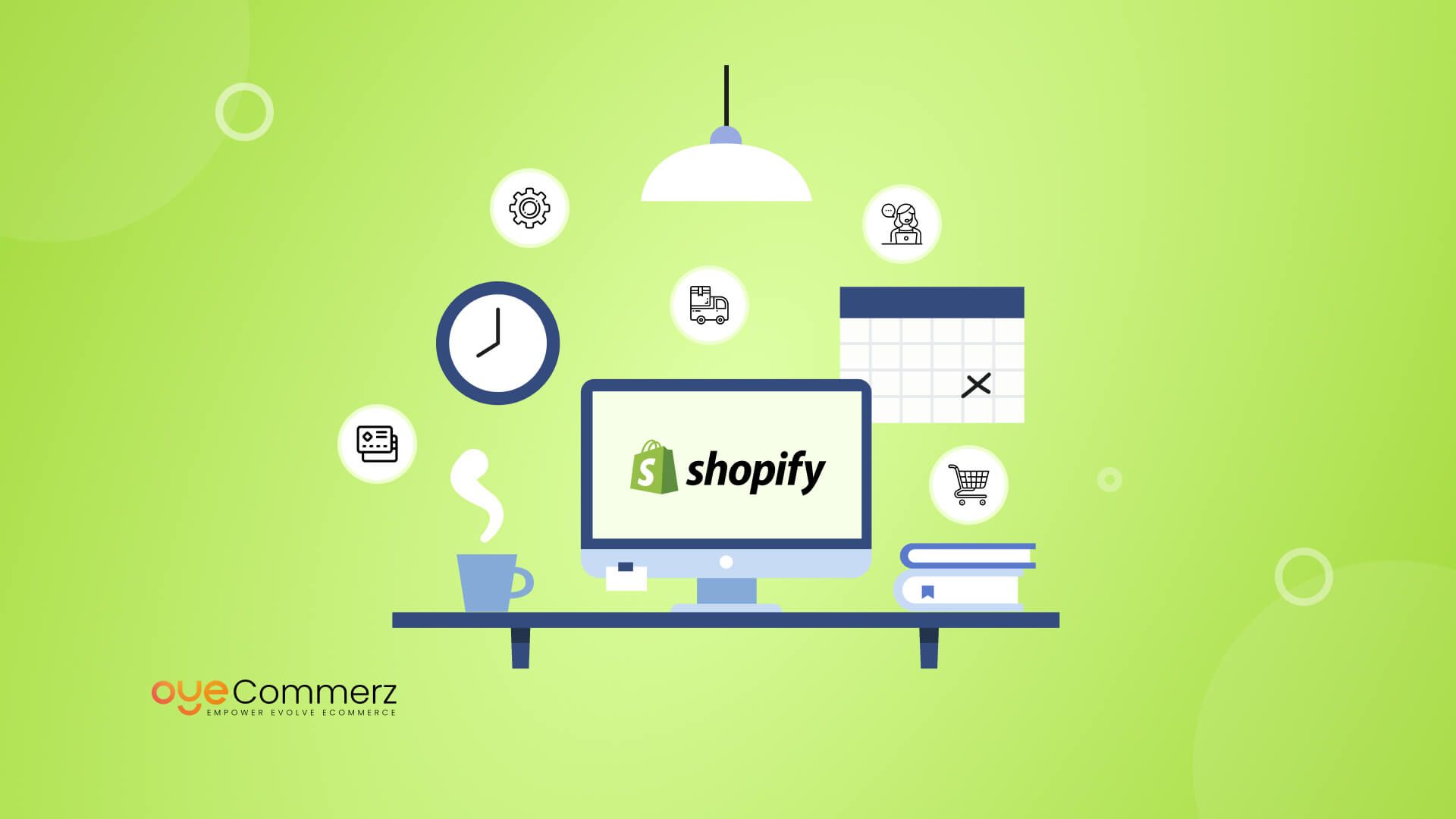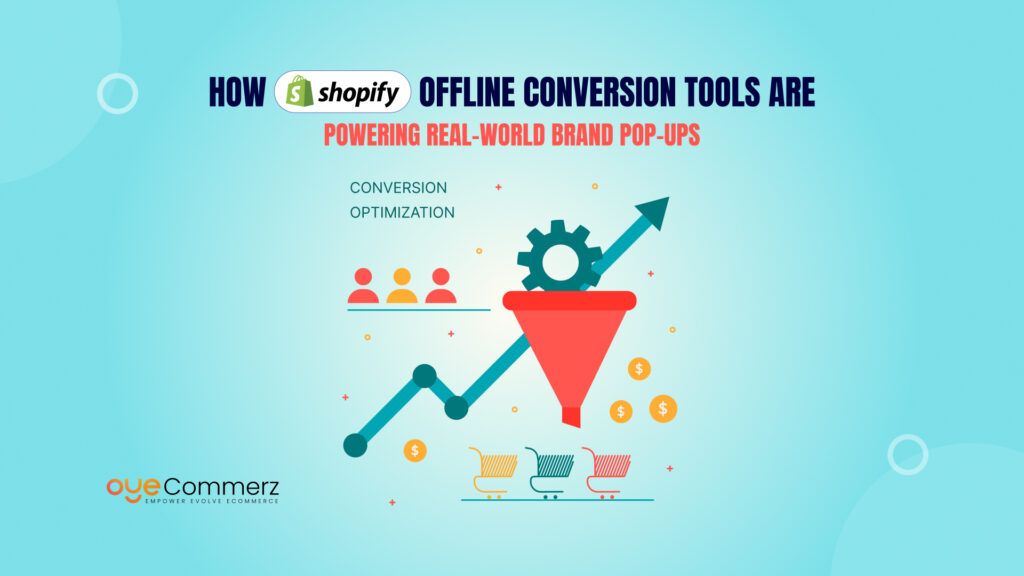Are you an existing Squarespace business owner wondering if your online store is reaching its full potential? Imagine doubling your sales with the right tools at your fingertips! Shopify offers powerful e-commerce features that go beyond what Squarespace can provide, helping businesses like yours scale faster and smarter. From advanced customization to seamless integrations, Shopify equips you to grow in ways Squarespace simply can’t. If you’re ready to supercharge your store, it might be time to migrate from Squarespace and explore what E-commerce features Shopify offers. Let’s dive in and see how this switch can transform your online business!
Table of Contents
ToggleUnderstanding Shopify and Squarespace: A Quick Comparison
Choosing the right platform for your online store is like picking the foundation for your dream home—it sets the stage for your success. Let’s break down Shopify and Squarespace to help you understand what makes them tick.
What is Shopify?
Shopify is the powerhouse of e-commerce platforms. It’s designed specifically for businesses that want to sell online, manage their stores seamlessly, and scale without limits. With features like advanced product management, multiple payment gateways, and powerful marketing tools, Shopify is built to grow with you—whether you’re just starting out or running a thriving online empire.
What is Squarespace?
Squarespace, on the other hand, is a creative platform best known for its stunning website templates. While it does support basic e-commerce, its primary focus is on design and content-driven websites. It’s ideal for small businesses, portfolio sites, or those who want a beautiful site with light e-commerce needs.
Who’s the Target Audience?
- Shopify: Gen Z entrepreneurs, ambitious startups, and established brands looking for a robust e-commerce solution.
- Squarespace: Creatives, solopreneurs, and small businesses prioritizing aesthetics over e-commerce features.
Key Differences in E-Commerce Focus
- Scalability: Shopify handles high traffic and large inventories effortlessly. Squarespace struggles when businesses start to scale.
- Customizations: Shopify offers endless possibilities through apps and APIs. Squarespace provides limited e-commerce customizations.
- Tools for Growth: Shopify includes advanced analytics, multi-currency support, and automation tools. Squarespace has basic e-commerce tools suited for smaller operations.
If your goal is to go big, Shopify is your go-to. It’s not just about selling products; it’s about building a brand that grows with you. Why settle for limits when you can have limitless possibilities?
Essential E-Commerce Features: Shopify vs. Squarespace
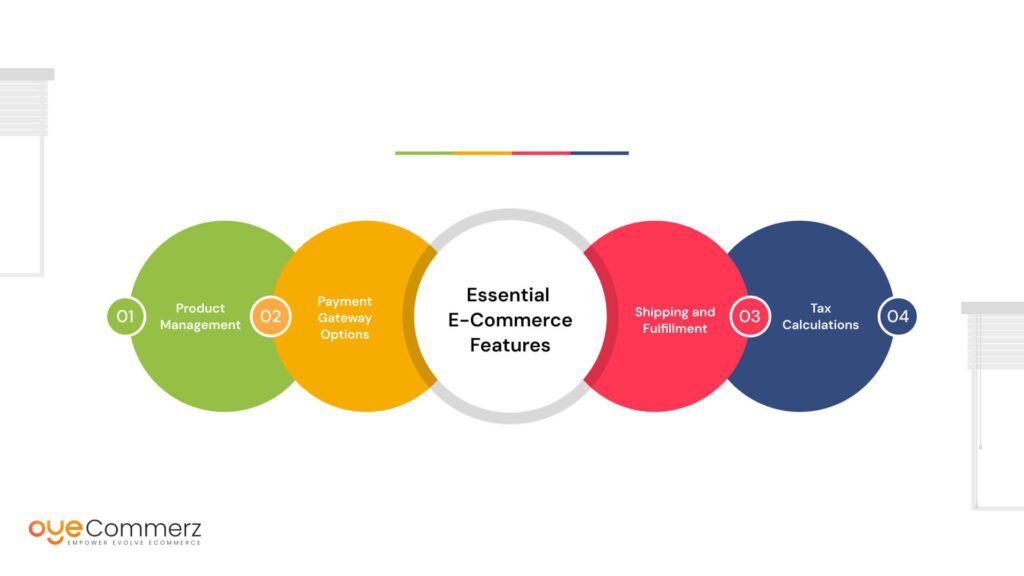
When it comes to running an online store, the features you rely on daily can make or break your business. Shopify and Squarespace both offer tools to sell online, but they differ significantly in their approach. Let’s dive into four essential features—product management, payment gateways, shipping, and tax calculations—and see how Shopify and Squarespace stack up.
Product Management
Managing your products efficiently is critical, especially as your inventory grows. Shopify makes this process effortless with advanced inventory management, allowing you to track stock levels, set reorder points, and manage multiple warehouses. It also supports bulk editing, saving you time when updating prices, descriptions, or tags for multiple items. Additionally, Shopify lets you create unlimited product variations, like size, color, and material, all with separate SKUs.
Squarespace, while sleek, offers limited product management tools. It’s great for smaller stores with simple catalogs, but if you want advanced features like variant tracking or bulk updates, you’ll feel the pinch. For growing businesses, Shopify’s robust tools provide the edge you need.
Payment Gateway Options
When it comes to accepting payments, flexibility is key. Shopify connects you to 100+ payment gateways worldwide, including popular options like PayPal, Stripe, and Apple Pay. Its own payment solution, Shopify Payments, eliminates transaction fees and simplifies setup. Plus, Shopify supports multi-currency transactions, enabling you to sell to customers around the globe seamlessly.
Squarespace, however, offers far fewer gateways, limiting your options. Moreover, it doesn’t have native multi-currency support, which can be a major hurdle if you’re targeting international markets. Shopify makes getting paid simple, no matter where your customers are.
Shipping and Fulfillment
Shipping isn’t just about getting products to your customers; it’s about delivering convenience. Shopify shines here with real-time shipping rates, letting customers see accurate costs based on their location. You can also generate and print shipping labels directly from Shopify, streamlining your fulfillment process. Shopify even offers access to its fulfillment network, allowing you to store and ship products with ease.
Squarespace provides basic shipping features, like flat-rate or weight-based shipping. While sufficient for smaller stores, it lacks the integrations and automation needed for larger operations. Shopify’s shipping tools scale with your business, making it easier to meet growing demands.
Tax Calculations
Taxes can be tricky, but Shopify takes the stress out of compliance. It provides automated tax calculations based on your customers’ location, ensuring you’re always accurate. Whether you’re dealing with VAT, GST, or sales tax, Shopify keeps things simple and worry-free.
Squarespace, on the other hand, requires you to manually set up tax rules. This is fine for small stores operating in one region but becomes cumbersome as your business expands to multiple locations or countries.
Why Shopify Wins
Shopify’s focus on scalability and automation makes it the go-to platform for entrepreneurs looking to grow. From advanced product management to global payment options and hassle-free shipping, Shopify delivers the tools you need to scale effortlessly. If you’re serious about building a thriving e-commerce business, Shopify’s features aren’t just nice to have—they’re essential.
Advanced E-Commerce Features Shopify Offers
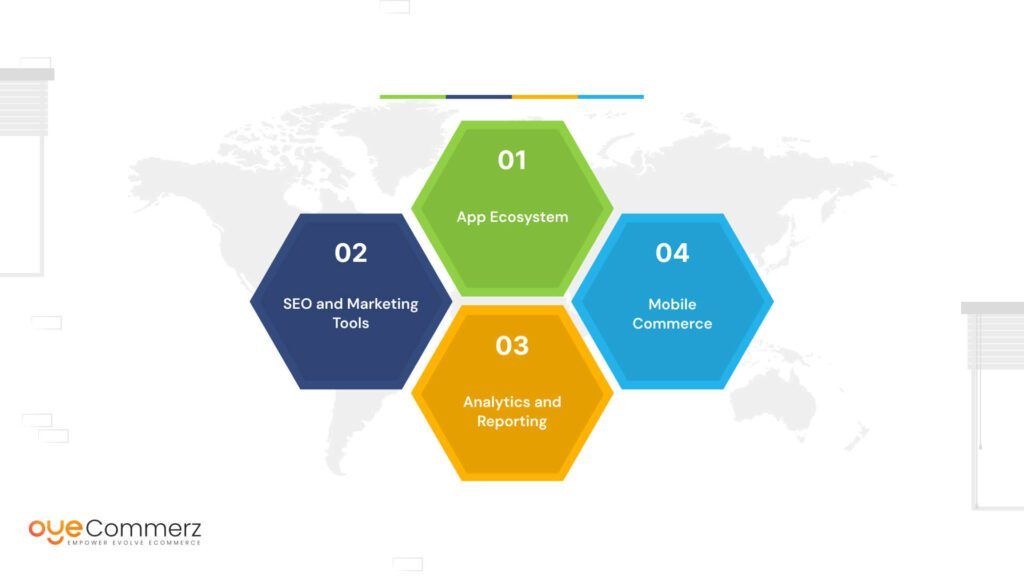
For modern entrepreneurs, having access to advanced tools can define your online store’s success. Shopify stands out by offering cutting-edge features that go beyond the basics, empowering you to grow, adapt, and optimize your business. Let’s explore Shopify’s app ecosystem, SEO and marketing tools, analytics and reporting, and mobile commerce capabilities—and why they leave Squarespace in the dust.
App Ecosystem
Think of Shopify’s app ecosystem as a toolbox for customizing your store and scaling your business. With access to 6,000+ apps, you can add functionalities tailored to your needs, whether it’s enhancing customer experience, streamlining logistics, or boosting sales.
A few standout apps include:
- Shopify Flow: Automate tasks and workflows, freeing up your time.
- Klaviyo: Deliver targeted email campaigns with powerful segmentation tools.
- ReCharge: Enable subscription services to increase customer retention.
Squarespace’s app options, by comparison, are limited and lack the depth to handle advanced e-commerce requirements. For ambitious entrepreneurs, Shopify’s apps open doors to endless possibilities.
SEO and Marketing Tools
In the digital age, visibility is everything. Shopify helps you stand out with built-in SEO features, like customizable meta tags, alt text for images, and automatic sitemap generation. Add to that abandoned cart recovery, which sends follow-up emails to potential customers who leave items behind, helping you recapture lost sales. Shopify also integrates with tools like Google Ads and Facebook Ads for seamless marketing campaigns.
Squarespace offers basic SEO tools, but they’re not specifically tailored to e-commerce needs. Its marketing features, while aesthetically pleasing, don’t match Shopify’s depth or ability to drive growth.
Analytics and Reporting
Data is the backbone of smart decision-making, and Shopify delivers with comprehensive analytics and reporting tools. You get access to dashboards that display real-time performance metrics like sales, traffic, and customer behavior. Shopify also supports custom reports, allowing you to focus on data points that matter most to your business.
For businesses looking to grow, Shopify’s advanced reporting options help identify opportunities and track ROI effectively. On the other hand, Squarespace’s analytics are basic and primarily focused on website traffic, making it harder to gain insights into your store’s e-commerce performance.
Mobile Commerce
In a mobile-first world, your store’s accessibility on smartphones is non-negotiable. Shopify excels with a dedicated mobile app that lets you manage your store, track orders, and update inventory from anywhere. Its themes are fully responsive, ensuring your site looks flawless on every device.
Squarespace offers mobile-optimized templates, but its mobile commerce features are limited. There’s no dedicated app to manage your store on the go, making Shopify the better choice for busy entrepreneurs who need flexibility.
Why Shopify’s Advanced Features Matter
Shopify isn’t just a platform; it’s a complete ecosystem designed to help you grow and adapt to the fast-changing e-commerce landscape. Whether you’re diving into data analytics, launching targeted marketing campaigns, or scaling your store with the perfect apps, Shopify has your back.
Squarespace, while elegant, can’t compete with Shopify’s depth in advanced features. Ready to take your store to the next level? Shopify is the key to unlocking your e-commerce potential.
Scalability and Customization
As your business grows, you need a platform that can scale with you while offering flexibility for customization. Shopify is built to handle businesses of all sizes, while Squarespace often falls short for growing operations. Let’s explore the key differences in multi-store management, customization capabilities, and scalability.
Multi-Store Management
Running multiple stores can be a game-changer for businesses expanding into different markets or niches. Shopify Plus makes it easy with multi-store management, allowing you to control multiple stores from a single admin panel. This feature lets you streamline operations, manage products across stores, and tailor customer experiences for different regions.
Squarespace, however, doesn’t support multi-store management. If you plan to expand your online empire, this limitation can slow down your growth and increase your workload.
Customization Capabilities
Shopify gives you the power to create a store that feels uniquely yours. Its Liquid programming language allows deep customization, letting developers tweak themes and add advanced features. Additionally, Shopify’s robust API integrations let you connect third-party tools or build custom apps to meet your specific needs.
Squarespace, while known for its beautiful templates, offers limited customization options. You can tweak design elements to fit your brand, but it’s harder to go beyond the basics. For entrepreneurs looking to build a unique and functional store, Shopify’s flexibility is a clear winner.
Scalability for Growing Businesses
Whether you’re running a small startup or a rapidly expanding brand, Shopify is designed to grow with you. Its infrastructure handles high traffic, large product catalogs, and international sales effortlessly. Tools like Shopify Plus provide enterprise-level solutions for scaling globally, managing logistics, and automating workflows.
Squarespace, on the other hand, is best suited for small-scale operations. While it’s great for beginners or small businesses, it lacks the robust tools and performance capabilities needed to support high-volume stores or complex operations.
Technical Capabilities: Shopify’s Edge Over Squarespace
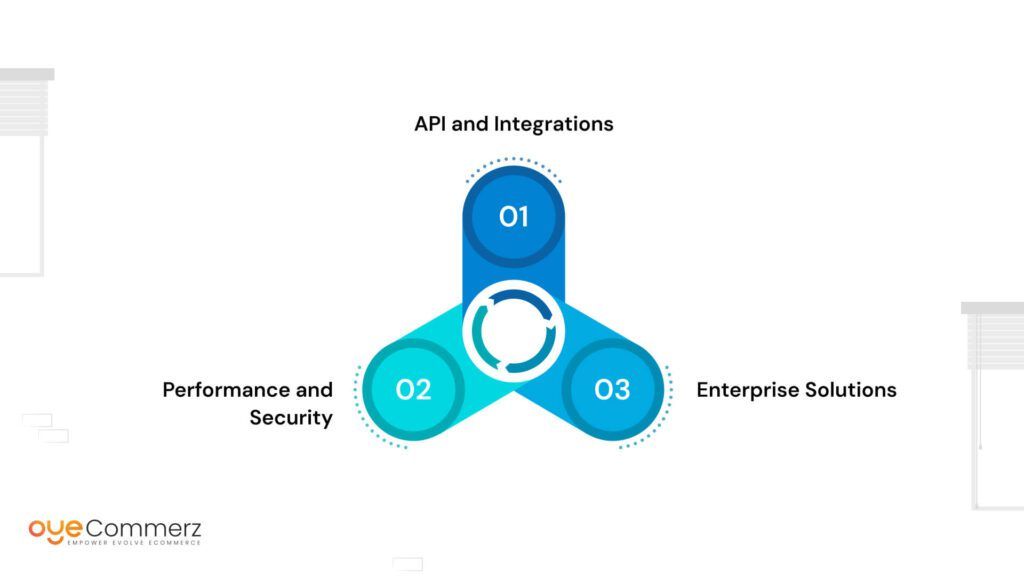
In the fast-paced world of e-commerce, technical capabilities play a huge role in ensuring your store’s success. Shopify’s robust platform is designed to cater to businesses of all sizes, while Squarespace is better suited for simpler needs. Here’s a closer look at Shopify’s edge in APIs, integrations, performance, security, and enterprise solutions.
API and Integrations
APIs (Application Programming Interfaces) are the backbone of customization and connectivity for e-commerce platforms. Shopify offers a robust API that allows seamless integration with third-party tools and apps, enabling businesses to connect everything from CRMs and ERPs to advanced marketing tools. You can even create custom apps tailored to your unique requirements, giving you endless possibilities for scaling and streamlining your operations.
Squarespace, on the other hand, has limited API options, restricting your ability to connect external tools or customize functionality. This makes Shopify the go-to choice for businesses looking for a future-proof platform with limitless integration opportunities.
Performance and Security
Fast and secure websites aren’t just a luxury—they’re a necessity. Shopify takes performance seriously with faster load times, ensuring customers enjoy a smooth shopping experience. Its platform is also PCI-compliant, meeting industry standards to protect sensitive payment information. Plus, Shopify offers automatic updates to keep your store secure and running smoothly at all times.
Squarespace provides basic performance and security features, which may suffice for smaller stores but often struggle to keep up with the demands of high-traffic or high-volume businesses. Shopify’s performance edge means fewer cart abandonments and a higher chance of converting visitors into buyers.
Enterprise Solutions
For businesses operating on a larger scale, Shopify Plus offers powerful enterprise-level solutions. Features like Shopify Scripts let you customize shopping experiences, including discounts and shipping options, while a dedicated account manager ensures you have expert guidance as your business grows. Shopify’s infrastructure is also designed to handle high-volume sales, making it a top choice for growing brands.
Squarespace lacks comparable enterprise-level features, making it challenging to support larger businesses or those with complex requirements.
How to Migrate from Squarespace to Shopify
Migrating your online store from Squarespace to Shopify can feel like a big step, but it doesn’t have to be overwhelming. With the right approach, you can ensure a smooth transition without disrupting your business operations.
Overview of the Migration Process
The migration process involves transferring your website’s data—products, customer information, order history, and more—from Squarespace to Shopify. This includes exporting data from Squarespace, formatting it to Shopify’s requirements, and importing it into your new Shopify store. Afterward, you’ll customize your Shopify store to align with your branding and test it to ensure everything functions as expected.
Tips for Seamless Data Transfer
- Plan Ahead: Make a checklist of what needs to be migrated, including product details, customer records, and pages.
- Back Up Data: Always save a backup of your Squarespace data before starting the migration.
- Optimize Along the Way: Use this opportunity to clean up outdated data, rewrite product descriptions, or update images.
- Test Thoroughly: Before going live, ensure all links work, payment gateways are connected, and your store looks great across devices.
Why Work with Oyecommerz’s Shopify Experts?
Oyecommerz simplifies the migration process. Our team ensures that every detail—big or small—is handled professionally, so you can focus on running your business. With experience in seamless Squarespace to Shopify migrations, we’ll make sure your store is optimized for Shopify’s advanced features.
Contact to Migrate your Site to Shopify Now
Conclusion
Shopify outshines Squarespace with its superior e-commerce features, from advanced product management to powerful customization tools and robust integrations. It’s the platform built for growth, offering scalability, security, and enterprise-level solutions to help your business thrive.
If you’re ready to take your store to the next level, Shopify is the way to go. Don’t let limitations hold you back—explore Shopify’s features today or contact us for expert migration assistance. Let’s make your e-commerce journey seamless and successful with Oyecommerz!

